Ubud, the cultural heart of Bali, offers travelers a captivating blend of natural wonders and sacred sites. From the playful Balinese long-tailed macaques at the lush Monkey Forest to the serene Tirta Empul Temple and its holy spring waters, this enchanting destination immerses visitors in the island’s rich heritage. Towering gateways of the Gate of Heaven Temple provide awe-inspiring vistas of Mount Agung, while meticulously tended temple gardens, intricate stone carvings, and the comfort of traditional Balinese sarongs create a profound cultural experience. Prepare to be enchanted as you uncover the best that Ubud has to offer.
Key Points
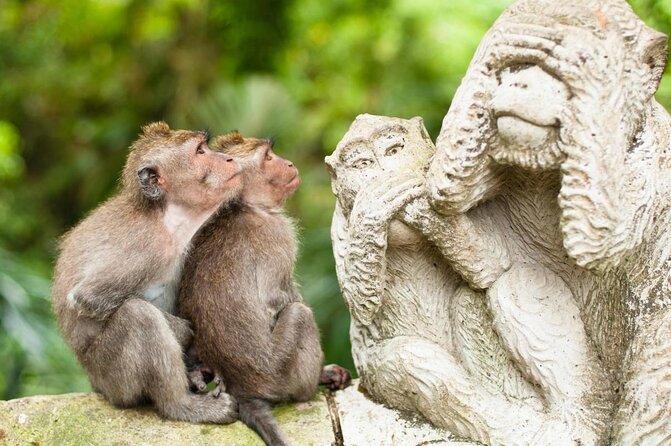
- Explore the Ubud Monkey Forest and observe over 700 Balinese long-tailed macaques in their natural habitat.
- Visit the sacred Tirta Empul Holy Water Temple and immerse in the purifying spring waters.
- Discover the majestic Gate of Heaven Temple and capture the famous ‘Gates of Heaven’ shot.
- Admire the mesmerizing tiered fountains and serene temple gardens at Tirta Empul.
- Marvel at the intricate stone sculptures and carvings that adorn the temple grounds.
It's also worth checking out some other tours and experiences nearby.
Exploring the Ubud Monkey Forest
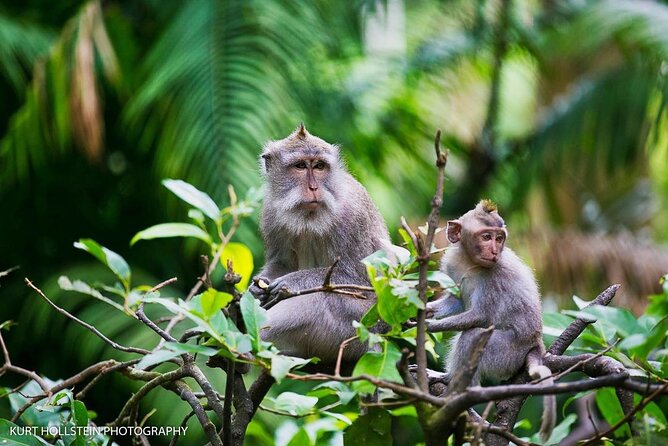
One of the highlights of the Best of Ubud tour is a visit to the Ubud Monkey Forest, which houses over 700 Balinese long-tailed macaques roaming freely within the sanctuary’s lush, verdant grounds. Visitors can observe the monkeys up close as they scamper about, play, and interact with one another.
The tour guide provides insights into the monkeys’ behavior and the importance of the forest to the local Balinese community. Guests are advised to keep a safe distance and avoid direct eye contact with the monkeys, as they can be unpredictable.
The Ubud Monkey Forest also features ancient Hindu temples, walking trails, and a variety of plant and bird species, making it a captivating and educational stop on the Best of Ubud experience.
Visiting Tirta Empul Holy Water Temple
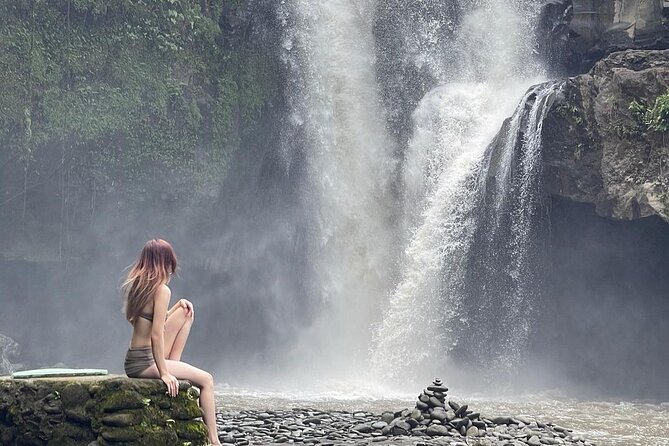
After exploring the captivating Ubud Monkey Forest, the Best of Ubud tour takes visitors to the Tirta Empul holy water temple, a revered Hindu-Balinese site known for its tiered fountains, manicured gardens, and intricate stone sculptures.
Visitors can expect to:
- Witness the sacred ritual of bathing in the purifying spring waters, believed to cleanse the body and soul
- Wander through the ornate temple grounds, admiring the detailed carvings and architectural features
- Learn about the temple’s historical and cultural significance from the knowledgeable local guide
- Immerse in the serene, spiritual atmosphere, taking time for quiet reflection amidst the lush, verdant setting
This temple visit offers a profound cultural experience, allowing travelers to connect with Bali’s rich religious heritage.
Discovering the Gate of Heaven Temple
Next, the Best of Ubud tour takes visitors to the majestic Gate of Heaven Temple, also known as Pura Lempuyang Luhur.
This iconic Hindu shrine boasts breathtaking vistas, where travelers can capture the famous ‘Gates of Heaven’ shot with the mighty Mount Agung in the background.
Guests will be awestruck by the temple’s towering 9-tiered gateways, believed to be one of the oldest and most sacred temples in Bali.
As they ascend the 1,700 steps to the summit, they’ll be immersed in the serene atmosphere and have the opportunity to learn about the temple’s rich history and cultural significance.
The Gate of Heaven Temple is a must-visit destination for any Bali traveler seeking stunning scenery and a profound cultural experience.
Admiring the Balinese Tiered Fountains
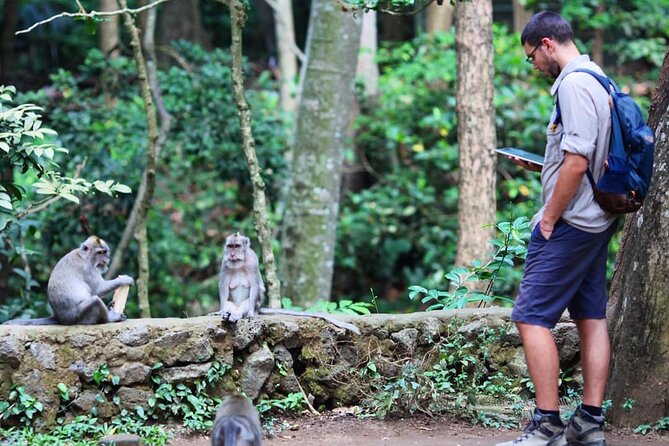
Travelers can’t help but be captivated by the mesmerizing tiered fountains of Tirta Empul, the holy water temple nestled in Bali’s verdant countryside. These beautifully manicured pools, fed by natural springs, have been a site of spiritual cleansing and rejuvenation for centuries, drawing devotees and visitors alike to partake in the sacred rituals.
Visitors will encounter intricate stone carvings and sculptures adorning the fountains and pools.
Locals can be seen bathing in the refreshing waters, believed to have purifying powers.
The temple complex is surrounded by peaceful gardens and walkways.
Visitors have the chance to don a traditional Balinese sarong and enjoy the spiritual atmosphere.
Strolling Through Manicured Temple Gardens
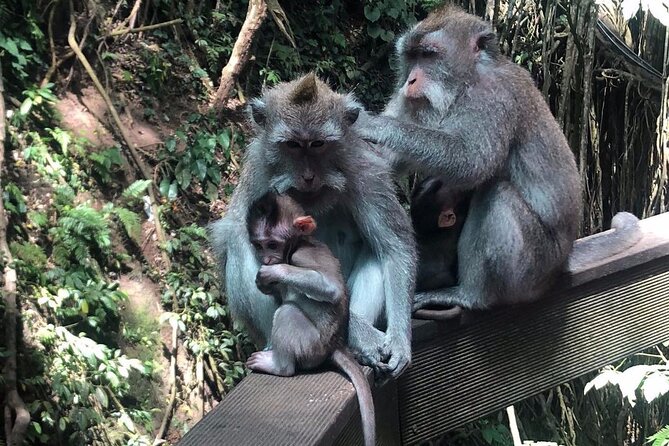
As visitors explore the temple grounds, they’ll find themselves captivated by the serene, manicured gardens that envelope the sacred site.
Lush greenery, fragrant flowers, and winding pathways create a tranquil atmosphere, inviting guests to slow down and enjoy the spiritual ambiance of the space.
These meticulously tended gardens feature a variety of tropical plants, from vibrant blooms to ornamental shrubs, all artfully arranged to complement the temple’s ancient stone structures.
Wandering through the gardens, visitors can pause to admire the intricate carvings and statues that dot the landscape, each one imbued with symbolic meaning within the temple’s religious context.
The overall effect is one of profound serenity, a true oasis of calm amidst the bustle of the Bali tourist trail.
Marveling at Stone Sculptures and Carvings

Amidst the serene gardens, visitors can’t help but marvel at the intricate stone sculptures and carvings that dot the temple grounds, each one imbued with profound spiritual significance. The artistry on display is breathtaking, from the towering statues of Hindu deities to the delicate bas-relief panels depicting scenes from ancient epics.
Visitors can admire the ornate stone gateways, their intricate designs a testament to the skill of Balinese stonemasons.
Visitors can discover hidden alcoves housing small shrines, their carved figures serving as guardians of the sacred space.
Visitors can trace the flowing curves and sharp angles of the temple architecture, marveling at the harmonious blend of form and function.
Visitors can pause to appreciate the attention to detail, each carving telling a story that transcends the physical realm.
Experiencing the Comfort of Balinese Sarongs
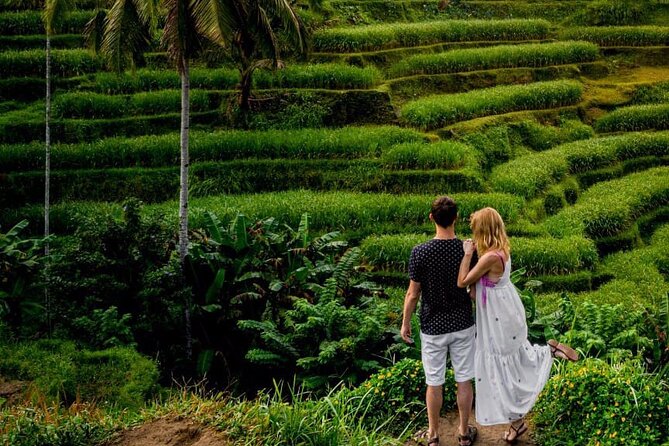
Donning a traditional Balinese sarong allows visitors to fully enjoy the temple’s sacred atmosphere, as the flowing, colorful garment effortlessly blends with the serene surroundings. The sarong’s loose, comfortable fit provides a sense of culture, making it easier to move reverently through the temple grounds. Not only does the sarong honor local customs, but it also offers practical benefits, such as protection from the sun and modesty when visiting religious sites. Visitors can choose from a range of vibrant patterns and styles, each with its own unique cultural significance.
| Benefits of Wearing a Balinese Sarong | |
|---|---|
| Honors local customs | Provides sun protection |
| Enhances culture | Promotes modesty |
Enjoying Private Transportation and Knowledgeable Guides
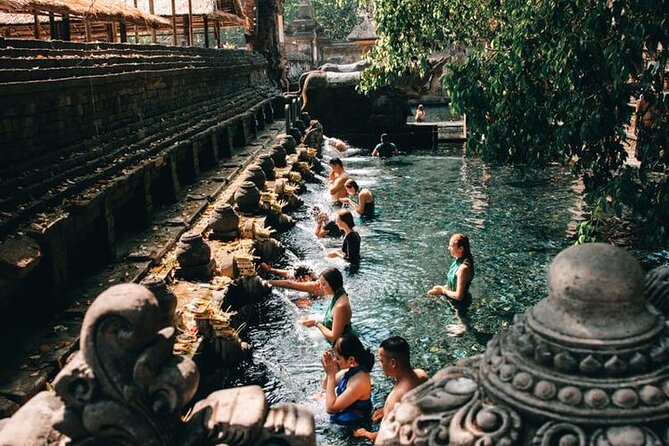
Beyond the culture of the Balinese sarong, visitors on the ‘Best of Ubud’ tour can relax and enjoy the comfort of private transportation and the expertise of knowledgeable local guides.
The tour includes:
- Pickup from hotels in popular areas like Kuta, Seminyak, and Ubud, ensuring a seamless start to the day.
- An air-conditioned minivan that provides a comfortable ride between destinations.
- Experienced, English-speaking drivers who serve as knowledgeable guides, sharing insights about Bali’s history, culture, and attractions.
- Smooth navigation through traffic and efficient coordination of all parking fees, allowing visitors to focus on the experiences rather than logistics.
This personalized approach enhances the overall enjoyment and understanding of the ‘Best of Ubud’ adventure.
Here's a few more nearby tours and experiences we think you'll like.
- Ubud: Monkey Forest, Jungle Swing, Rice Terrace, and Water Temple
- Best of Ubud Attractions: Private All-Inclusive Tour
- Kintamani Cultural and Nature Cycling Tour
- Best of Ubud Private Day Tour With All Inclusive
- Bali Ubud Paon Cooking Class
- Bali Quad Bike Through Gorilla Cave – Monkey Forest and Waterfall
Frequently Asked Questions
Can I Bring My Own Food and Drinks on the Tour?
Yes, you can bring your own food and drinks on the tour. The tour doesn’t include meals, so you’re free to pack your own refreshments. Just be mindful of the tour itinerary and any restrictions at the sites you’ll visit.
How Much Time Is Spent at Each Location?
The tour itinerary typically allocates around 1-2 hours at each major site, allowing visitors ample time to explore and experience the highlights. The exact time spent at each location may vary depending on group size and pace.
Are There Any Additional Fees Not Included in the Tour?
The tour doesn’t include any additional fees beyond the stated inclusions. However, visitors should expect to pay for their own meals and any optional activities or tickets not included in the tour package.
Can I Take Photos Inside the Temples?
Yes, visitors can take photos inside the temples on this tour. However, they should be respectful and avoid disrupting ceremonies or prayers. Some temples may have restrictions on photography in certain areas.
Is the Tour Suitable for Young Children?
The tour is generally suitable for young children as it includes stops at family-friendly attractions like the Monkey Forest and Tirta Empul Temple. However, the length and pace may be tiring for some young travelers.
Not for you? Here's more of our most recent tour reviews happening neaby
- Ubud Tour – Best of Ubud With Jungle Swing – All Inclusive
- Private Bali Tour: Kintamani Volcano and Besakih Temple
- Balis Most Beautiful Temple Private Tour
- Bali Individual Route With Private English Speaking Driver
- Batur Volcano Dirt Bike Adventure and Tour
- Bali Instagram Tour: The Most Scenic Spots
- Bali Private Day Tour
- Private Tour Mount Batur Sunrise Jeep
- City Escape: Bali Waterfalls Private Day Trip
- Ubud Private Full Day Tour With Swing and Lunch
- Watching Dolphins Swimming and Snorkeling in Lovina Bali
- Private 6-Course Romantic Candlelight Dinner Overlooking Ubud Valley
- Jatiluwih E-bikes Tour Cycling Group
- Bali ATV Ride Adventure & White Water Rafting With All-Inclusive
- Bali Quad Bike ATV Passing Through Waterfall, Cave & Rice Fields
Recap
Ubud’s enchanting attractions, from the playful Monkey Forest to the awe-inspiring Gates of Heaven Temple, offer an immersive cultural experience.
With private transportation and knowledgeable guides, visitors can explore the lush temple gardens, marvel at intricate stone carvings, and even don a traditional Balinese sarong, creating an unforgettable journey through Bali’s rich heritage.
